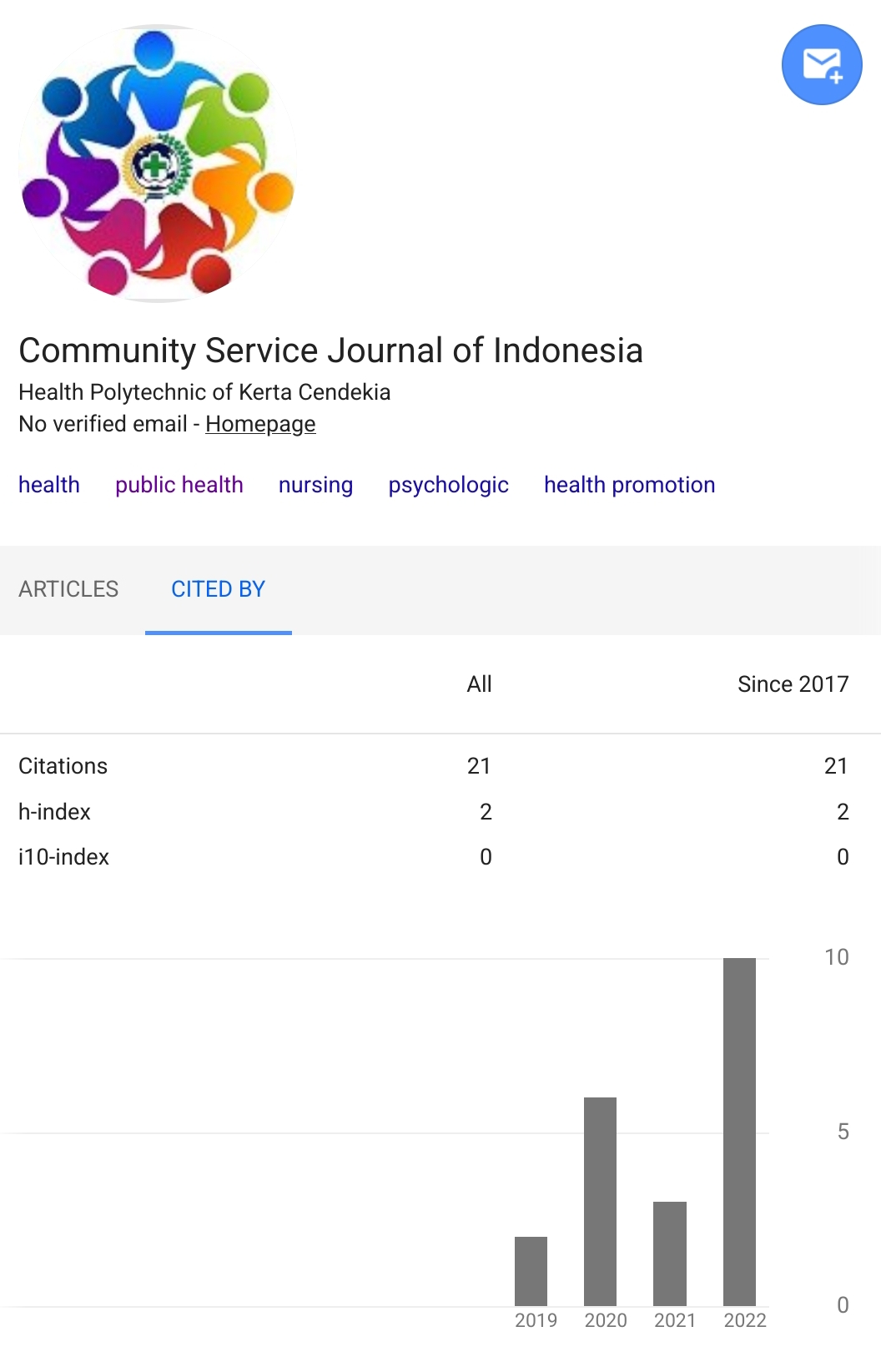PREVENTION OF DENGUE HEMORRHAGIC FEVER THROUGH THE WASDEBANG (DENGUE HEMORRHAGIC FEVER ALERT) PROGRAM
Keywords:
Dengue Hemorrhagic Fever, WasDeBang (Waspada Demam Berdarah Dengue), Community Empowerment
Abstract
The WasDeBang (Dengue Hemorrhagic Fever Alert) program which was held in Kalipecabean Village, Candi District, Sidoarjo Regency is a form of community service to reduce the incidence of Dengue Fever which often increases when facing the rainy season. The activity will be held on September 5, 2021, at the house of a resident in Kalipecabean village, Candi District, Sidoarjo Regency. The target is the residents of the Kalipecabean village, Candi District, Sidoarjo Regency, in this case especially the PKK (Family Welfare Empowerment) women. Prior to the implementation of these activities, there is a process of preparing activities for approximately 3 weeks before the activities are carried out, starting from determining the theme of the extension to applying for permits to the relevant parties. As a form of evaluation, the activity was attended by 26 PKK mothers, the participants took part in the activity with great enthusiasm, health promotion activities could run on time and smoothly.References
Asep, S. (2014). Demam Berdarah Dengue (DBD). Medula, 2(2), 1-15.
Candra, A. (2010). Demam Berdarah Dengue: Epidemiologi, Patogenesis, dan Faktor Risiko Penularan. ASPIRATOR-Journal of Vector-borne Disease Studies, 2(2), 110 – 119.
Indonesian Ministry of Health. (2019). Upaya Pencegahan DBD dengan 3M Plus. Retieved from https://promkes. kemkes.go.id/ upaya-pencegahan-dbd-dengan-3m-plus on February 14, 2021 at 17.20 WIB.
Irawati, E., Chen, W. A., & Miracle, G. PENINGKATAN PROMOSI KESEHATAN MELALUI EDUKASI PENCEGAHAN PENYAKIT DEMAM BERDARAH. Prosiding SENAPENMAS, 661-668.
Sanyaolu, A., Okorie, C., Badaru, O., Adetona, K., Ahmed, M., & Akanbi, O. (2017). Global epidemiology of dengue hemorrhagic fever: an update. J Hum Virol Retrovirol, 5(6), 00179.
World Health Organization. (2012). Global strategy for dengue prevention and control 2012-2020.
Candra, A. (2010). Demam Berdarah Dengue: Epidemiologi, Patogenesis, dan Faktor Risiko Penularan. ASPIRATOR-Journal of Vector-borne Disease Studies, 2(2), 110 – 119.
Indonesian Ministry of Health. (2019). Upaya Pencegahan DBD dengan 3M Plus. Retieved from https://promkes. kemkes.go.id/ upaya-pencegahan-dbd-dengan-3m-plus on February 14, 2021 at 17.20 WIB.
Irawati, E., Chen, W. A., & Miracle, G. PENINGKATAN PROMOSI KESEHATAN MELALUI EDUKASI PENCEGAHAN PENYAKIT DEMAM BERDARAH. Prosiding SENAPENMAS, 661-668.
Sanyaolu, A., Okorie, C., Badaru, O., Adetona, K., Ahmed, M., & Akanbi, O. (2017). Global epidemiology of dengue hemorrhagic fever: an update. J Hum Virol Retrovirol, 5(6), 00179.
World Health Organization. (2012). Global strategy for dengue prevention and control 2012-2020.
Published
2021-12-11
How to Cite
Riesmiyatiningdyah, R., Putra, K. W. R., Diana, M., Imron, K. A. F., Ardianto, E. H., & Fikri, Z. (2021). PREVENTION OF DENGUE HEMORRHAGIC FEVER THROUGH THE WASDEBANG (DENGUE HEMORRHAGIC FEVER ALERT) PROGRAM. Community Service Journal of Indonesia, 3(2), 21-24. https://doi.org/10.36720/csji.v3i2.353
Section
Articles
Copyright (c) 2021 Riesmiyatiningdyah Riesmiyatiningdyah, Kusuma Wijaya Ridi Putra, Meli Diana, Khoiri Ahmad Fauzi Imron, Erfian Heris Ardianto, Zahid Fikri

This work is licensed under a Creative Commons Attribution-NonCommercial 4.0 International License.
Authors who publish with Community Service Journal of Indonesia agree to the following terms:
- Authors retain copyright licensed under a Creative Commons Attribution-NonCommercial 4.0 (CC BY-NC 4.0), which allows others to remix, tweak, and build upon the authors' work non-commercially, and although the others' new works must also acknowledge the authors and be non-commercial, they don't have to license their derivative works on the same terms.
- Authors are permitted and encouraged to post their work online (e.g., in institutional repositories or on their website) prior to and during the submission process, as it can lead to productive exchanges, as well as earlier and greater citation of published work (See The Effect of Open Access). Authors can archive pre-print and post-print or publisher's version/PDF.














